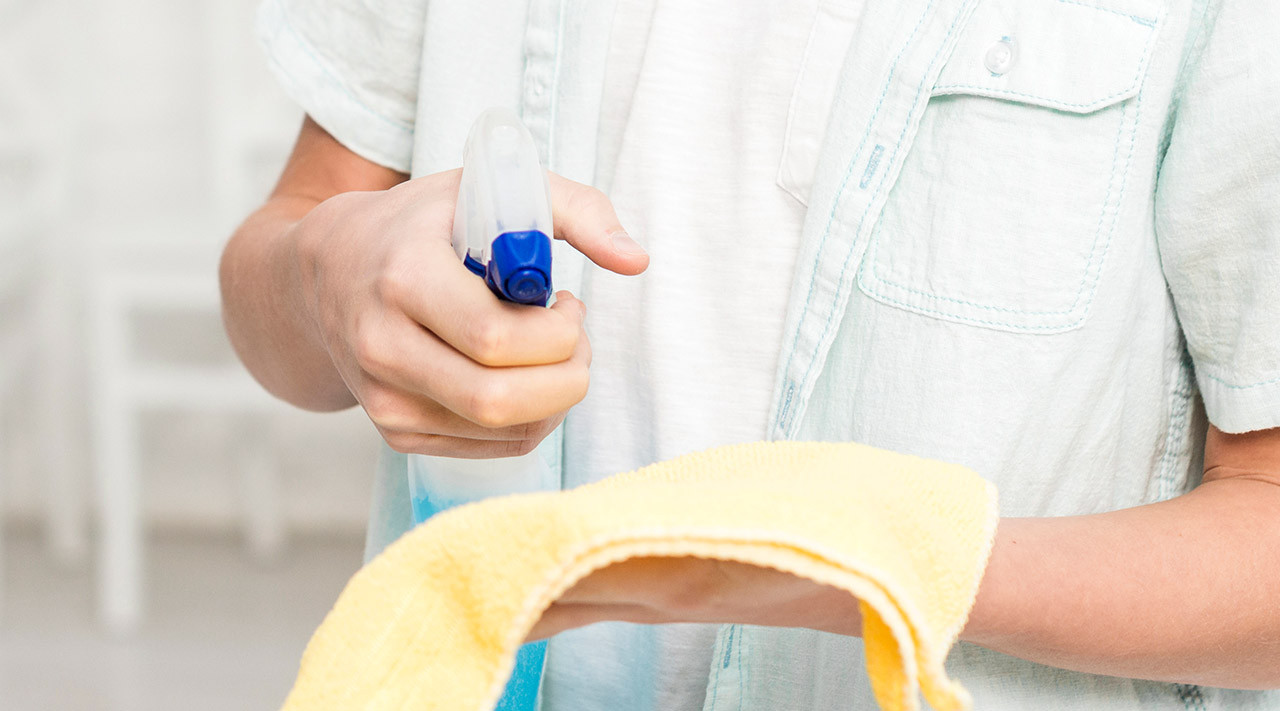How to Clean Faster Without Cutting Corners: A Custodian's Guide
Professional custodians who clean efficiently don't skip steps—they eliminate wasted motion, use better tools, and develop systematic approaches that deliver consistent results in less time.
This guide offers 10 proven techniques to help you clean more efficiently while maintaining the high-quality standards your facility demands. These aren't corner-cutting tricks—they're professional methods that experienced custodians use to work smarter, not just harder.
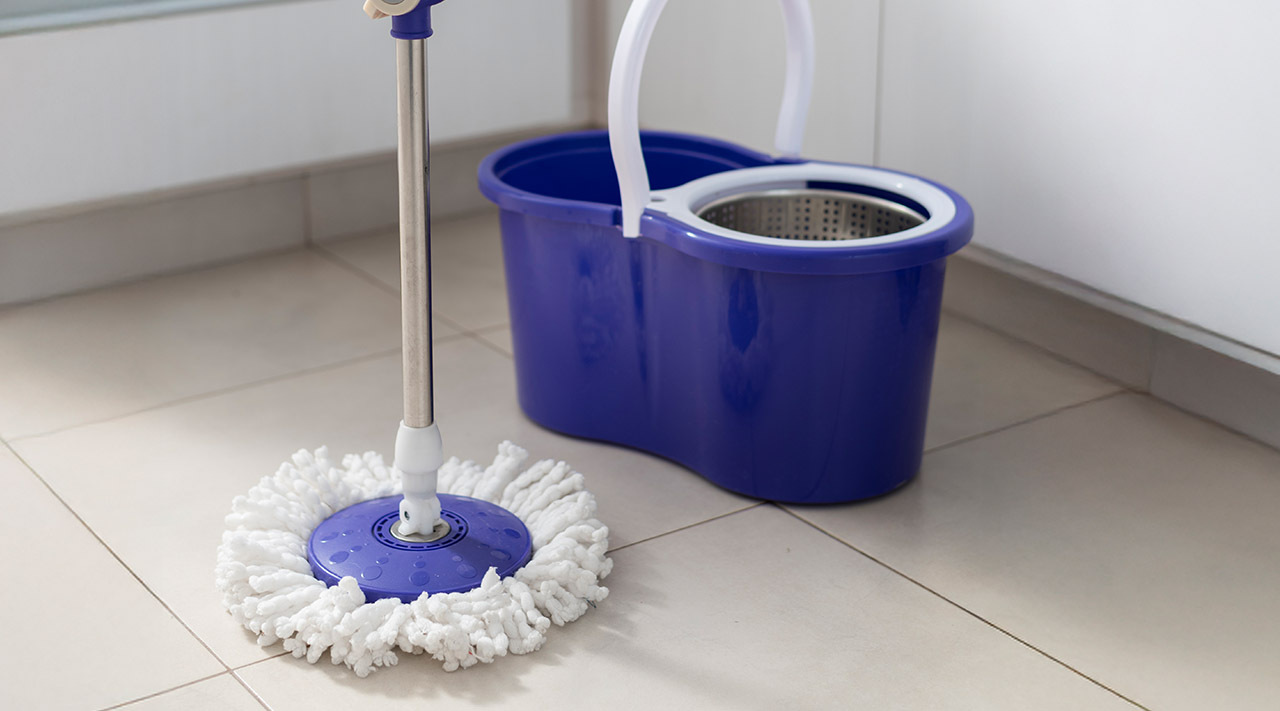
1. Use the Two-Bucket Mopping System
The Problem: Single-bucket mopping means you're eventually cleaning with dirty water, requiring multiple passes and wasting time.
The Solution: Switch to a dual-cavity bucket system that separates clean solution from dirty rinse water. This simple change keeps your mop consistently clean, reducing the number of passes needed and eliminating time spent dumping and refilling a single bucket.
Time Impact: Many custodians report saving 10-20 minutes per floor cleaning session by maintaining cleaner water throughout the process and reducing the need for frequent bucket changes.
Professional mop bucket and wringer systems with built-in wringers also reduce physical strain, letting you maintain a consistent pace throughout your shift without fatigue slowing you down.
2. Invest in Microfiber Technology
Why It Matters: Cotton mops and cloths require more effort, more product, and more passes to achieve the same results as microfiber alternatives.
The Upgrade: Microfiber mop pads trap dirt on first contact and cover more surface area per pass. They're machine washable and can last 100-200 washes, depending on laundering practices—significantly outlasting cotton's typical 15-30 wash lifespan.
Speed Benefit: In a study published in the American Journal of Infection Control, researchers compared cotton string mops and a microfiber mop system in 24 hospital rooms. They found that the microfiber system achieved ~95% microbial reduction using a detergent (vs ~68% with a cotton mop) and that adding a disinfectant to the microfiber did not significantly improve performance over detergent alone — demonstrating that microfiber cleaning itself was highly effective. This suggests that, in real commercial/healthcare use, microfiber systems can reduce labor (fewer passes, fewer solution changes) while maintaining or improving cleaning outcomes.
Pair your microfiber mops with quality microfiber cleaning cloths and towels for a complete cleaning system that maximizes efficiency across all tasks.
Shop Microfiber Mops → | Shop Microfiber Cloths →
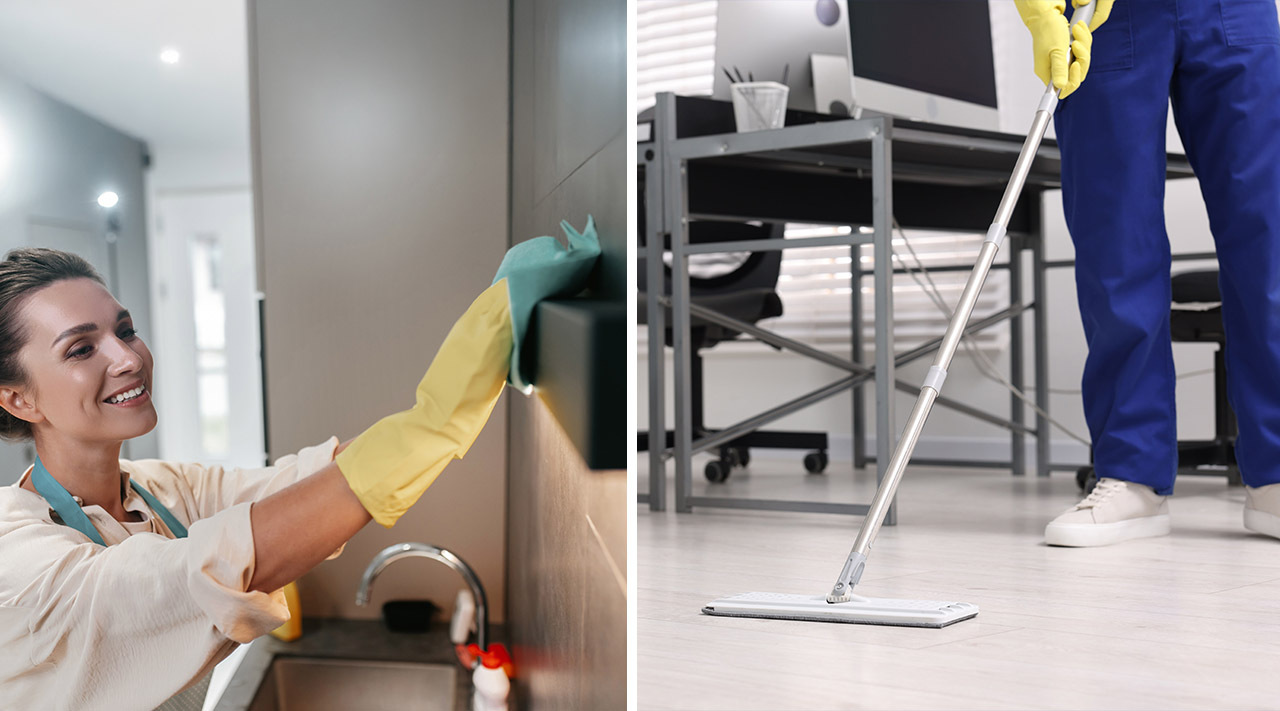
3. Master the "Top-to-Bottom, Left-to-Right" Method
The Strategy: Always clean from ceiling to floor, working systematically in one direction through each room. This prevents re-contamination and eliminates wasted motion from random cleaning patterns.
How to Apply:
• Start with ceiling vents, light fixtures, and high surfaces using dusters
• Move to mid-level surfaces (desks, counters, equipment), cleaning the surfaces with wipes
• Finish with floors using brooms and mops after all debris has fallen
• Work left-to-right or right-to-left consistently to avoid missing spots
Why It Works: This systematic approach—recommended by ISSA (International Sanitary Supply Association)—ensures you never clean the same area twice and prevents dust from high surfaces falling onto already-cleaned lower areas. It also creates a mental checklist that prevents missed spots requiring return trips.
Shop Dusters → | Shop Brooms & Brushes →
4. Use Concentrated Cleaners Properly
Common Mistake: Using ready-to-use cleaners wastes time in transport and storage. Over-diluting concentrates reduces effectiveness, requiring extra effort. Under-diluting wastes product and money.
The Right Approach: Properly diluted cleaning concentrates clean effectively on first application, typically eliminating time spent on second passes or excessive scrubbing.
Key Benefits:
• Lighter to carry means less fatigue
• Correct dilution removes soil on first pass
• Reduced storage space means less time searching for supplies
• One concentrate can replace multiple ready-to-use products
Keep a dilution chart posted at your supply station and use measured dispensers to ensure consistency. This eliminates guesswork and maintains cleaning effectiveness across all tasks.
Essential Concentrate Categories:
• All-Purpose Cleaners for daily surface cleaning
• Bathroom Cleaners for restroom maintenance
• Disinfectants for high-touch surfaces
Browse All Cleaning Chemicals →
5. Implement Color-Coded Cleaning Systems
The Efficiency Gain: Color-coded microfiber cloths and towels and mop pads prevent cross-contamination while speeding up your workflow by eliminating decision-making time.
Standard Color System (ISSA recommended):
• Red: Restrooms and toilets
• Blue: General surfaces and glass
• Green: Food preparation areas
• Yellow: High-infection-risk areas
Time Benefit: No sorting, no thinking, no mistakes. Grab the right color for each area and move efficiently through your route. This system also prevents health code violations that could require time-consuming re-cleaning.
Shop Color-Coded Microfiber Cloths →
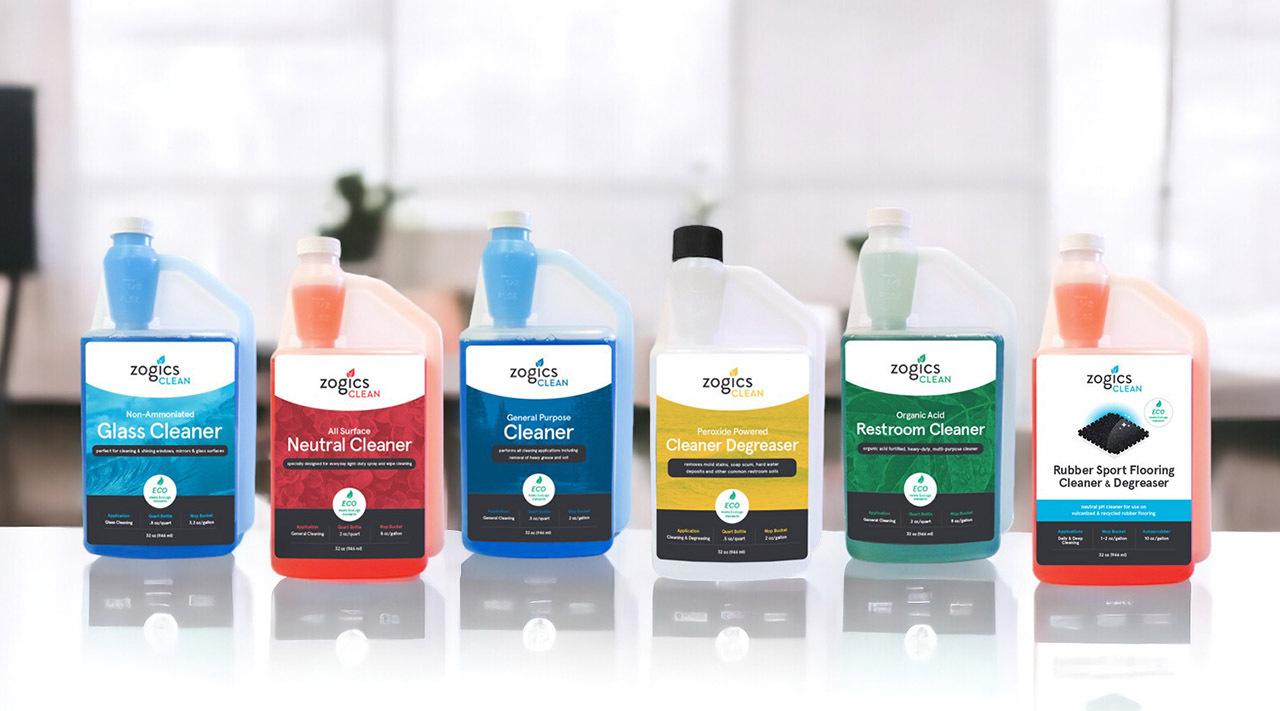
6. Keep a Fully-Stocked Cleaning Caddy
The Problem: Walking back to supply closets multiple times per shift wastes significant time and breaks your cleaning rhythm.
The Solution: Maintain a portable caddy with everything needed for standard cleaning tasks:
• Microfiber cloths (color-coded)
• Gloves
Impact: Experienced custodians often estimate saving 15-25 minutes per shift by eliminating supply runs. Keep backup caddies pre-stocked so you can swap out depleted supplies without interrupting workflow.
Shop Cleaning Tools & Supplies →
7. Pre-Treat Problem Areas During Your First Pass
Smart Strategy: When you first enter a restroom or break room, immediately spray cleaner on toilets, sinks, and counters. Let chemistry do the work while you empty trash, restock supplies, and clean mirrors.
Why It Works: According to EPA and CDC cleaning guidelines, most disinfectants require 3-10 minutes contact time for maximum effectiveness (check product labels for specific dwell times). By pre-treating surfaces, the cleaner breaks down soil while you complete other tasks. When you return to wipe down, surfaces typically clean easily without excessive scrubbing.
Application: This "spray and walk away" technique works for:
• Toilets and urinals with bathroom cleaners
• Soap scum on sinks
• Kitchen counters with dried spills using degreasers
• Shower walls and tubs
Shop Bathroom Cleaners → | Shop Degreasers →
8. Use an 18" Mop Head for Open Areas
The Math: Standard 5-inch mop heads require significantly more passes than 18-inch frames to cover the same floor space—potentially 3-4 times as many.
The Upgrade: Wide flat mop systems dramatically reduce the time spent on large open areas like hallways, cafeterias, and lobbies. The extended coverage means fewer passes and faster completion.
Real-World Impact: Many custodians find that cleaning large open areas with an 18-inch mop can take roughly half the time compared to traditional narrow mop heads, though actual results vary based on floor type, soil level, and technique.
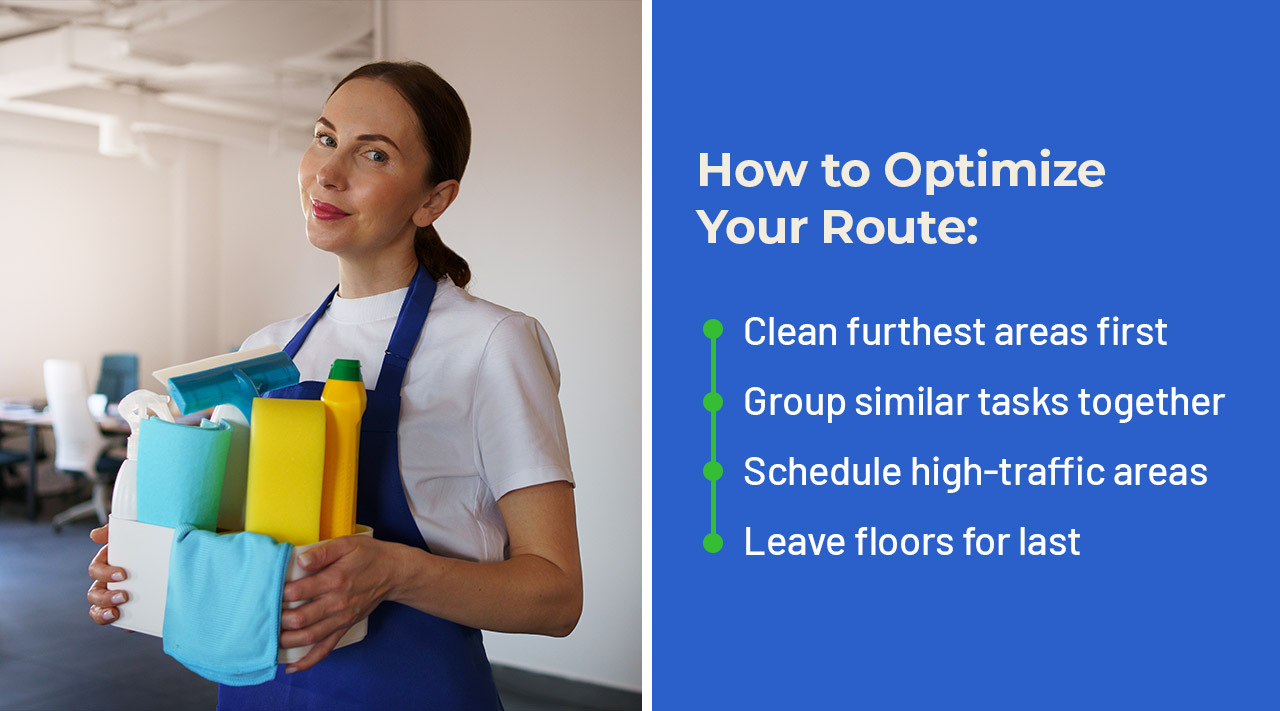
9. Establish a Consistent Daily Route
Why Routine Matters: Creating and following the same cleaning sequence every day builds muscle memory, eliminates decision fatigue, and helps you work at maximum efficiency.
How to Optimize Your Route:
• Clean furthest areas first, work back toward supply closet
• Group similar tasks together (all trash collection, then all restrooms, etc.)
• Schedule high-traffic areas during low-occupancy times
• Leave floors for last to avoid walking on wet surfaces
The Result: Custodians who follow consistent, optimized routes often work significantly faster—in many cases 20-30% or more—than those using random approaches. Your speed improves naturally as movements become automatic and you eliminate wasted steps.
10. Maintain Your Equipment Daily
The Hidden Time Drain: Clogged vacuum filters, worn mop heads, and dirty cleaning cloths force you to work harder and longer for inferior results.
The Solution: Spend 10 minutes at shift end maintaining equipment:
• Start by rinsing and hanging mop heads to dry — following the steps in our How to Wash a Mop Head: Easy Steps for a Spotless Clean guide
• Empty and clean vacuum canisters and check the filters
• Wash microfiber cloths and towels
• Check cleaning solution levels
• Wipe down equipment surfaces
Long-Term Benefit: Well-maintained equipment works at peak efficiency, preventing mid-shift slowdowns from equipment failures. Those 10 minutes of daily maintenance can save 30-60 minutes of inefficiency and emergency troubleshooting throughout the week.
For larger equipment, such as floor scrubbers or burnishers, follow the expert tips in our Maintaining Your Commercial Floor Cleaning Machine: Essential Care Tips article to extend their lifespan and reliability.
Finally, keeping a few replacement parts on hand—like hoses, filters, and accessories—ensures you can make quick swaps and stay on schedule. If you’re in the market for an upgrade, check out our Best Commercial Vacuum Cleaner Guide: 4 Top Picks for 2025 to help you choose the right vacuum for your cleaning needs.
Bonus Strategy: Track Your Time to Identify Bottlenecks
For two weeks, note how long each major task takes. You'll quickly identify where you're losing time—whether it's excessive scrubbing (wrong products), too many supply trips (poor planning), or slow floor coverage (wrong tools).
This data-driven approach helps you prioritize improvements that deliver maximum time savings.
Quality Doesn't Require Extra Time—It Requires Better Methods
The custodians who clean fastest without sacrificing quality don't rush—they eliminate wasted motion, use superior tools, and follow systematic approaches that deliver consistent results.
These 10 techniques address the most common time-wasters that slow down custodial work. Implement them gradually, focusing on one or two improvements per week until they become second nature. Custodians who adopt these methods typically report noticeable improvements in their efficiency, often completing tasks 20-40% faster within their first few months of consistent application.
Speed comes from efficiency, not from cutting corners. With the right tools, proper techniques, and systematic approaches, you can meet tight schedules while maintaining the quality standards your facility demands.
Ready to upgrade your custodial toolkit? Browse our complete selection of Janitorial & Cleaning Supplies to find the professional-grade equipment that helps you work faster without sacrificing quality.
Shop All Janitorial Supplies →
Frequently Asked Questions
How long does it take to get faster at custodial work?
Most new custodians see significant speed improvements within 4–6 weeks as muscle memory develops and they optimize their routes. Implementing the systematic approaches in this guide can accelerate that timeline, with many reporting noticeable efficiency gains within the first month.
What's the single most important upgrade for faster cleaning?
Switching to microfiber cleaning tools often delivers the biggest immediate impact. Industry consensus and user feedback suggest that microfiber mop pads and cloths clean more effectively on first pass, reducing time spent on multiple applications and excessive scrubbing.
How do I balance speed with thoroughness?
Systematic approaches like “top-to-bottom” cleaning and consistent daily routes help ensure thoroughness while maximizing speed. Quality issues typically arise from random approaches and skipped steps, not from working efficiently with proper methods.
Should I invest in my own equipment as a custodian?
Many professional custodians invest in personal microfiber cloths, quality gloves, and comfortable work shoes. These relatively inexpensive upgrades can improve efficiency and comfort, often paying for themselves through reduced fatigue and improved workflow.
What if my facility doesn't provide adequate supplies?
Document supply shortages and their impact on cleaning time. Present this data to management along with specific product recommendations and estimated time savings. Most facilities will invest in better tools when shown clear ROI through reduced labor hours.
Recent Posts
-
Fragrance-Free vs Scented: Build an Allergy-Safe Cleaning Program that Still Works
When "Clean" Becomes a Complaint You know the scene: your custodial team disinfects the office overn …Dec 05, 2025 -
How to Prevent Slippery Floors After Disinfecting: Custodian Safety Guide
When Clean Turns Dangerous You've just finished disinfecting the lobby floor. It's spotless. Germ-fr …Nov 28, 2025 -
Sensitive Skin Cleaning: Low Irritant Disinfectants, Gloves, and Hand Care Stations
Facility managers often report that skin irritation ranks among the top three health complaints from …Nov 14, 2025

